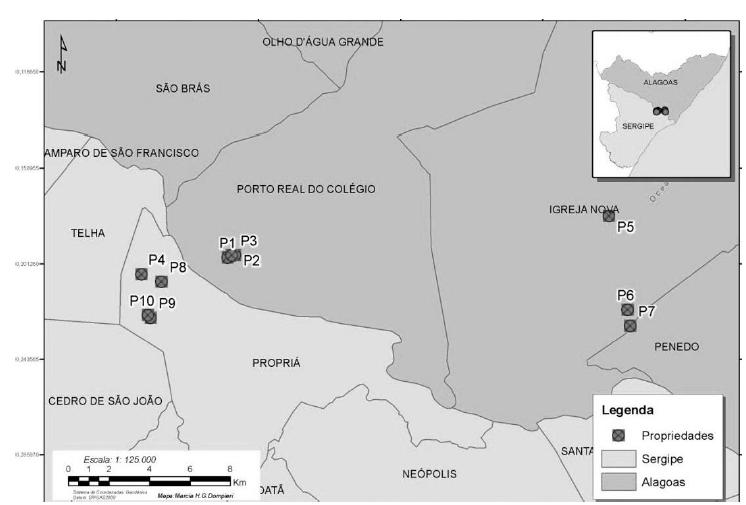ABSTRACT
This study investigated the parasitic fauna of tambaquis reared in lower Sao Francisco region-Al/SE-Brazil correlating parasitic indices to abiotic and biotic factors. A total of 252 specimens of tambaqui were collected in ten fish farms for parasitological analysis. The parasites were counted, identified and the parasitological indices were determined and correlated to biotic and abiotic factors. Of all collected fish, 65,5 % were parasitized by at least one taxon. Ten taxa were found: Monogeneans, Ichthyophthirius multifiliis, trichodinids Piscinoodinium pillulare, Ichthyobodo sp, Dolops carvalhoi, Lernaea cyprinacea, Procamallanus (Spirocamallanus) inopinatus, Henneguya sp. and Myxobolus sp. The higher prevalences were found to monogeneans (49.2%) and Myxobolus sp. (31.5%). Negative correlation of prevalence and biotic factor (weight and length) were observed to monogeneans (r 2 = -0.49, r 2 = -0.43), Myxobolus sp (r²= -0.46; r²= -0.39) and Henneguya sp (r²= -0.41; r²= -0.39). Abiotic factor of temperature presented a negative correlation to prevalence of Lernaea cyprinacea and trichodinids (r= -0.39 e r= -0.33, respectively) and the electric conductivity presented positive correlation to trichodinids (r= 0.40). It was concluded that parasitic fauna of tambaquis cultured in Lower São Francisco region is diversified and the parasitic load dependent on water parameters and fish growth.
Keywords:
aquaculture; Colossoma macropomum; health; management; parasites

